Blur (band)
Blur are an English rock band formed in London in 1988. The group consists of vocalist Damon Albarn, guitarist Graham Coxon, bassist Alex James, and drummer Dave Rowntree.
Blur | |
|---|---|
.png) Top: Damon Albarn, Graham Coxon Bottom: Alex James, Dave Rowntree | |
| Background information | |
| Origin | London, England |
| Genres |
|
| Years active |
|
| Labels |
|
| Website | blur |
| Members |
|
Blur's debut album Leisure (1991) incorporated the sounds of Madchester and shoegazing. Following a stylistic change influenced by English guitar pop groups such as the Kinks, the Beatles, and XTC, Blur released Modern Life Is Rubbish (1993), Parklife (1994), and The Great Escape (1995). Blur were central to the 1990s Britpop movement; they achieved mass popularity in the UK, aided by a chart battle with rivals Oasis in 1995 dubbed the "Battle of Britpop".
Blur's self-titled fifth album (1997) incorporated influences from the lo-fi styles of American indie rock groups, and became their third UK chart-topping album. Its single "Song 2" brought Blur mainstream success in the US. Their next album, 13 (1999) saw the band experimenting with electronic and gospel music, and featured more personal lyrics from Albarn. Their seventh album, Think Tank (2003), was shaped by Albarn's growing interest in hip hop and African music, with more minimal guitar work. Coxon left during the recording, and Blur disbanded for several years after the album's release, with the members engaged in other projects.
In 2009, Blur, with Coxon, reunited for a series of concerts. In the following years, they released several singles and compilations and toured internationally. In 2012, they received a Brit Award for Outstanding Contribution to Music. Their eighth album, The Magic Whip (2015), was the sixth consecutive Blur studio album to top the British charts.
History
Formation and Leisure, 1988–1991
.png)
Childhood friends Damon Albarn and Graham Coxon from Essex met Alex James when they began studying at London's Goldsmiths College in 1988. Albarn was in a group named Circus, who were joined by drummer Dave Rowntree that October.[1][2] Circus requested the services of Coxon after the departure of their guitarist. That December, Circus fired two members and James joined as the group's bassist. This new group named themselves Seymour in December 1988, inspired by J. D. Salinger's Seymour: An Introduction.[2][3] The group performed live for the first time in summer 1989.[4] In November, Food Records' A&R representative Andy Ross attended a Seymour performance that convinced him to court the group for his label. The only concern held by Ross and Food was that they disliked the band's name. Food drew up a list of alternatives, from which the group decided on "Blur". Food Records finally signed the newly christened band in March 1990.[5]
From March to July 1990, Blur toured Britain, opening for the Cramps, and testing out new songs. In October 1990, after their tour was over, Blur released the "She's So High" single, which reached number 48 in the UK Singles Chart.[6] The band had trouble creating a follow-up single, but they made progress when paired with producer Stephen Street. The resulting single release, "There's No Other Way", became a hit, peaking at number eight.[7] As a result of the single's success, Blur became pop stars and were accepted into a clique of bands who frequented the Syndrome club in London dubbed "The Scene That Celebrates Itself".[8] NME magazine wrote in 1991, "[Blur] are [the] acceptable pretty face of a whole clump of bands that have emerged since the whole Manchester thing started to run out of steam."[9]
The band's third single, "Bang", performed relatively disappointingly, reaching only number 24.[10] Andy Ross and Food owner David Balfe were convinced Blur's best course of action was to continue drawing influence from the Madchester genre. Blur attempted to expand their musical sound, but the recording of the group's debut album was hindered by Albarn having to write his lyrics in the studio. Although the resulting album Leisure (1991) peaked at number seven on the UK Albums Chart, it received mixed reviews,[6] and according to journalist John Harris, "could not shake off the odour of anti-climax".[11]
Britpop years, 1992–1995
After discovering they were £60,000 in debt, Blur toured the United States in 1992 in an attempt to recoup their financial losses.[12] The group released the single "Popscene" to coincide with the start of the tour. Featuring "a rush of punk guitars, '60s pop hooks, blaring British horns, controlled fury, and postmodern humor",[13] "Popscene" was a turning point for the band musically.[14] However, upon its release it only charted at number 32. "We felt 'Popscene' was a big departure; a very, very English record", Albarn told the NME in 1993, "But that annoyed a lot of people ... We put ourselves out on a limb to pursue this English ideal and no-one was interested."[15] As a result of the single's lacklustre performance, plans to release a single named "Never Clever" were scrapped and work on Blur's second album was pushed back.[16]
During the two-month American tour, the band became increasingly unhappy, often venting frustrations on each other, leading to several physical confrontations.[17] The band members were homesick; Albarn said, "I just started to miss really simple things ... I missed everything about England so I started writing songs which created an English atmosphere."[15] Upon the group's return to Britain, Blur (Albarn in particular) were upset by the success rival group Suede had achieved while they were gone.[18] After a poor performance at a 1992 gig that featured a well-received set by Suede on the same bill, Blur were in danger of being dropped by Food.[19] By that time, Blur had undergone an ideological and image shift intended to celebrate their English heritage in contrast to the popularity of American grunge bands like Nirvana.[20] Although sceptical of Albarn's new manifesto for Blur, Balfe gave assent for the band's choice of Andy Partridge (of XTC) to produce their follow-up to Leisure. The sessions with Partridge proved unsatisfactory, but a chance reunion with Stephen Street resulted in him returning to produce the group.[21]
Blur completed their second album Modern Life Is Rubbish in December 1992, but Food Records said the album required more potential hit singles and asked them to return to the studio for a second time. The band complied and Albarn wrote "For Tomorrow", which became the album's lead single.[22] "For Tomorrow" was a minor success, reaching number 28 on the charts.[23] Modern Life Is Rubbish was released in May 1993. The announcement of the album's release included a press photo which featured Blur, dressed in a mix of mod and skinhead attire, posing alongside a mastiff with the words "British Image 1" spraypainted behind them. At the time, such imagery was viewed as nationalistic and racially insensitive by the British music press; to quieten concerns, Blur released the "British Image 2" photo, which was "a camp restaging of a pre-war aristocratic tea party".[24] Modern Life Is Rubbish peaked at number 15 on the British charts,[25] but failed to break into the US Billboard 200, selling only 19,000 copies there.[26][27]
The success of Parklife (1994) revived Blur's commercial fortunes. The album's first single, the disco-influenced "Girls & Boys", found favour on BBC Radio 1 and peaked at number 5 on the UK Singles Chart,[28] and number 59 in the US Billboard Hot 100 where it remains the band's highest-charting single.[27] Parklife entered the British charts at number one and stayed on the album charts for 90 weeks.[29] Enthusiastically greeted by the music press—the NME called it "a Great Pop Record ... bigger, bolder, narkier and funnier [than Modern Life is Rubbish]"—Parklife is regarded as one of Britpop's defining records.[30][31] Blur won four awards at the 1995 Brit Awards, including Best Band and Best Album for Parklife.[32] Coxon later pointed to Parklife as the moment when "[Blur] went from being regarded as an alternative, left field arty band to this amazing new pop sensation".[33]
Blur began working on their fourth album The Great Escape at the start of 1995.[34] Building upon the band's previous two albums, Albarn's lyrics for the album consisted of several third-person narratives. James reflected, "It was all more elaborate, more orchestral, more theatrical, and the lyrics were even more twisted ... It was all dysfunctional, misfit characters fucking up."[35] The release of the album's lead single "Country House" played a part in Blur's public rivalry with Manchester band Oasis termed the "Battle of Britpop".[36] Partly due to increasing antagonisms between the groups, Blur and Oasis released their new singles on the same day, an event the NME called "The British Heavyweight Championship". The debate over which band would top the British singles chart became a media phenomenon, and Albarn appeared on the News at Ten.[37] At the end of the week, "Country House" ultimately outsold Oasis' "Roll With It" by 274,000 copies to 216,000, becoming Blur's first number one single.[38]
The Great Escape, which Albarn told the public was the last instalment in the band's Life Trilogy, was released in September 1995 to ecstatic reviews.[39] The NME hailed it as "spectacularly accomplished, sumptuous, heart-stopping and inspirational",[40] while Mojo argued "Blur are the very best that '95 Britpop has to offer and this is a most gong-worthy sound, complete with head-slicing guitars, catchy tunes and very funny words".[41] Entering the UK charts at number one,[42] the album sold nearly half a million copies in its first month of sale.[43] However, opinion quickly changed and Blur found themselves largely out of favour with the media once again. Following the worldwide success of Oasis' (What's the Story) Morning Glory? (which went quadruple platinum in America), the media quipped "[Blur] wound up winning the battle but losing the war."[44] Blur became perceived as an "inauthentic middle class pop band" in comparison to the "working class heroes" Oasis, which Albarn said made him feel "stupid and confused".[37] Alex James later summarised, "After being the People's Hero, Damon was the People's Prick for a short period ... basically, he was a loser – very publicly."[45]
Reinvention after Britpop, 1996–2000
An early 1996 Q magazine interview revealed that relations between Blur members had become very strained; journalist Adrian Deevoy wrote that he found them "on the verge of a nervous breakup".[45] Coxon, in particular, began to resent his band mates: James for his playboy lifestyle, and Albarn for his control over Blur's musical direction and public image.[45] The guitarist struggled with drinking problems and, in a rejection of the group's Britpop aesthetic, made a point of listening to noisy American alternative rock bands such as Pavement.[46] In February 1996, when Coxon and James were absent for a lip-synced Blur performance broadcast on Italian television, they were replaced by a cardboard cutout and a roadie, respectively. Blur biographer Stuart Maconie later wrote that, at the time, "Blur were sewn together very awkwardly".[45]
Although he had previously dismissed it, Albarn grew to appreciate Coxon's tastes in lo-fi and underground music, and recognised the need to significantly change Blur's musical direction once again. "I can sit at my piano and write brilliant observational pop songs all day long but you've got to move on", he said.[45] He subsequently approached Street, and argued for a more stripped-down sound on the band's next record. Coxon, recognising his own personal need to—as Rowntree put it—"work this band", wrote a letter to Albarn, describing his desire for their music "to scare people again". After initial sessions in London, the band left to record the rest of the album in Iceland, away from the Britpop scene.[45]
The result was Blur, the band's fifth studio album, released in February 1997. Although the music press predicted that the lo-fi sonic experimentation would alienate Blur's teenage girl fan-base, they generally applauded the effort. Pointing out lyrics such as "Look inside America/She's alright", and noting Albarn's "obligatory nod to Beck, [and promotion of] the new Pavement album as if paid to do so", reviewers felt the band had come to accept American values during this time—an about-face of their attitude during the Britpop years.[47] Despite cries of "commercial suicide", the album and its first single, "Beetlebum", debuted at number one in the UK.[48] Although the album could not match the sales of its predecessors in Britain, internationally Blur was more successful.[48] In the US, the album received strong reviews, reached number 61 on the Billboard 200 and was certified gold.[27][49] The album's "Song 2" single was also popular on alternative radio, reaching number six on the Modern Rock chart.[27] After it was licensed for use in various media—such as soundtracks, advertisements and television shows—"Song 2" became the most recognisable Blur song in the US. After the success of Blur, the band embarked on a nine-month world tour.[45]
In February 1998, a few months after completing the tour, Blur released Bustin' + Dronin' for the Japanese market. The album is a collection of Blur songs remixed by artists such as Thurston Moore, William Orbit and Moby. Among the tracks, the band were most impressed by Orbit's effort and enlisted him to replace Street as producer for their next album,[50] citing a need to approach the recording process from a fresh perspective.[33]
Released in March 1999, Blur's sixth studio album 13 saw them drift still further away from their Britpop-era attitude and sound. Orbit's production style allowed for more jamming, and incorporated a "variety of emotions, atmospheres, words and sounds" into the mix. 13 was creatively dominated by Coxon, who "was simply allowed to do whatever he chose, unedited", by Orbit.[51] Albarn's lyrics—more heart-felt, personal and intimate than on previous occasions—were reflective of his break-up with Elastica frontwoman Justine Frischmann, his partner of eight years.[51] The album received generally favourable reviews from the press. While Q called it "a dense, fascinating, idiosyncratic and accomplished art rock album",[52] the NME felt it was inconsistent and "(at least) a quarter-of-an-hour too long".[53] 13 debuted at the top of the UK charts, staying at that position for two weeks. The album's lead single, the gospel-based "Tender", opened at the second spot on the charts. After "Coffee & TV", the first Blur single to feature Coxon on lead vocals, only reached number 11 in the UK, manager Chris Morrison demanded a chart re-run because of what he deemed was a sales miscalculation.[54]
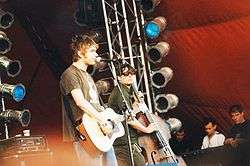
In July 1999, in celebration of their tenth anniversary, Blur released a 22-CD limited edition box-set of their singles. The accompanying tour saw Blur play the A-sides of the 22 singles in their chronological order of release.[55] In October 2000, the group released the compilation Blur: The Best Of, which debuted at number three in the UK and received a Platinum certification for 300,000 copies shipped.[56] Dismissed by the band as "the first record we have seen as product", the track listing and release dates of Blur: The Best Of were determined on the basis of market research and focus groups conducted by Blur's record label, EMI.[57] By this time, the group had largely disowned the upbeat pop singles from the Britpop era, and favoured the more arty, experimental work on Blur and 13. In an otherwise highly enthusiastic review of the best-of for the NME, Steve Sutherland criticised the band's "sheer disregard" for their earlier work; "Just because these songs embarrassed them once they started listening to broadsheet critics and retreated wounded from the big-sales battle with Oasis doesn't mean that we're morons to love them."[58]
Coxon's departure, Think Tank and hiatus, 2001–2007
After 13 and the subsequent tours in 1999–2000, band members pursued other projects. Graham Coxon recorded a string of solo albums, while Damon Albarn dedicated his time to Gorillaz, the animated band he had created with Jamie Hewlett. Alex James worked with Fat Les and co-wrote several songs with Sophie Ellis-Bextor and Marianne Faithfull.[59][60]
Recording for Blur's next album began in London in November 2001, but concerted work started in June 2002, with the sessions moving to Marrakech, Morocco soon after, and then to Devon back in the UK. Not long after the sessions began, Coxon left the group.[61] Coxon said "there were no rows" and "[the band] just recognised the feeling that we needed some time apart".[62] Before the album was released, Blur released a new single, "Don't Bomb When You Are the Bomb" as a very limited white label release. The song is largely electronic, and was part of the band's protest against war in the Middle East. Albarn, however, attempted to assuage fans' fears that the album would be electronic by providing reassurances that the band's new album would be "a rockin' record", and also said that it has "a lot of finely crafted pop songs".[63] Early in 2002, Blur recorded a song that would be played by European Space Agency's Beagle 2 lander once it touched down;[64] however, attempts to locate the probe after it landed on Mars were fruitless.[65]
Think Tank, released in May 2003, was filled with atmospheric, brooding electronic sounds, featuring simpler guitar lines played by Albarn, and largely relying on other instruments to replace Coxon. The guitarist's absence also meant that Think Tank was almost entirely written by Albarn. Its sound was seen as a testament to Albarn's increasing interest in African and Middle Eastern music, and to his complete control over the group's creative direction.[66] Think Tank was yet another UK number one and managed Blur's highest US position of number 56.[25][27] It was also nominated for best album at the 2004 Brit Awards.[67] The band did a successful tour in 2003, with former Verve guitarist Simon Tong filling in for Coxon.[68]
In 2005, XFM News reported that Blur would record an EP, and denied that they would hire a replacement guitarist for Coxon.[69] There were also some aborted recordings made in 2005. Overall the band kept a low profile and did no studio or touring work as a three-piece. After Coxon significantly thawed on the subject of rejoining Blur,[70] in 2007 band members announced that they would reunite, and that they intended to record together first in August, with the date later being pushed back to September, then October.[71][72] Though the band members finally met up in October, they posted on their website that they had only "met up for an enjoyable lunch" and that there were no "other music plans for Blur".[73]
Reunion, The Magic Whip, and second hiatus, 2008–present
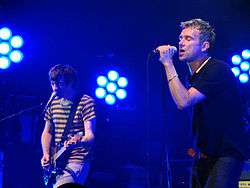
In December 2008, Blur announced they would reunite for a concert at London's Hyde Park on 3 July 2009.[73] Days later, the band added a second date, for 2 July.[74] A series of June preview shows were also announced, ending at Manchester Evening News arena on the 26th. All the shows were well received; The Guardian's music critic Alexis Petridis gave their performance at Goldsmiths college a full five stars, and wrote "Blur's music seems to have potentiated by the passing of years ... they sound both more frenetic and punky and more nuanced and exploratory than they did at the height of their fame".[75] Blur headlined the Glastonbury Festival on 28 June, where they played for the first time since their headline slot in 1998. Reviews of the Glastonbury performance were enthusiastic; The Guardian called them "the best Glastonbury headliners in an age".[76] The band released their second greatest hits album Midlife: A Beginner's Guide to Blur in June 2009.
Blur also headlined at other summer festivals, including Oxegen 2009 in Ireland,[77] and the Scottish outdoor show of T in the Park. Their T in the Park headline slot was put in jeopardy after Graham Coxon was admitted to hospital with food poisoning. Ultimately, the band did play, albeit an hour and a half after they were scheduled to appear.[78] After the completion of the reunion dates, James said the group had not discussed further plans, and Albarn told Q soon after that Blur had no intention of recording or touring again. He said, "I just can't do it anymore", and explained that the main motivation for participating in the reunion was to repair his relationship with Coxon, which he succeeded at.[79] Coxon also said that no further Blur activity was planned, telling NME.com in September, "We're in touch and we say 'Wotcha' and all that but nothing has been mentioned about any more shows or anything else".[80]
In January 2010, No Distance Left to Run, a documentary about the band, was released in cinemas and a month later on DVD.[81] In April 2010, Blur released their first new recording since 2003, "Fool's Day", for the Record Store Day event, as a vinyl record limited to 1000 copies; it was later made available as a free download on their website.[82] No Distance Left to Run was nominated as Best Long Form Music Video for the 53rd Grammy Awards, Blur's first-ever Grammy nomination.[83]
In February 2012, Blur were awarded the Outstanding Contribution to Music award at the 2012 Brit Awards.[84] Later that month, Albarn and Coxon premiered a new track together live, "Under the Westway".[85] In April, the band announced that a box-set entitled Blur 21—containing all seven Blur studio albums, four discs of unreleased rarities and three DVDs—would be released in July.[86] Blur had also entered the studio early that year to record material for a new album, but in May producer William Orbit told the NME that Albarn had halted recording.[87] Blur's official Twitter and Facebook pages announced that the band would release two singles "The Puritan" and "Under the Westway" on 2 July.[88] That August, Blur headlined a show at Hyde Park for the 2012 Summer Olympics closing ceremony.[89] In 2013, the band performed at the Rock Werchter in Belgium, the Spanish and Portuguese dates of the Primavera Sound festival,[90] and the Coachella Valley Music and Arts Festival in the United States.[91]
In April 2015, Blur released their first studio album in twelve years, The Magic Whip. Conceived over five days in Hong Kong after a cancelled Japan tour in 2013, the album was inspired by the city as well. "There's nothing pastoral about it", Albarn said, "it's very urban". The Magic Whip also marks the return of Coxon, absent on all but one track on Think Tank, and Stephen Street, Blur's producer during the Britpop era.[92] Upon its release, the record was greeted with applause both by the music press and the mainstream media.[93] Awarding the album a full five stars, The Daily Telegraph called The Magic Whip "a triumphant comeback that retains the band's core identity while allowing ideas they'd fermented separately over the past decade to infuse their sound with mature and peculiar new flavour combinations".[94] The NME concurred, saying Blur were "a reunited band making music to rival their very best".[95] It was also a commercial success, becoming the sixth consecutive Blur LP since Parklife (1994) to top the British charts. The Guardian also noted that at times during its first week of release, The Magic Whip sold "more than the rest of the top five combined".[96] That December New World Towers, a documentary on the recording process of The Magic Whip, was released in select British theatres.[97][98]
Blur have been on hiatus once again since the 2015 tour promoting The Magic Whip.[99] In 2018, Albarn said that a Blur reunion is "Never not a possibility", and confessed "I’d hate to think I’d never play with those musicians again."[100] The band briefly reunited in March 2019 for a surprise performance at an Albarn-organized Africa Express event in London.[101]
Influences
Damon Albarn recalls the Who and the Jam as two of Graham Coxon's early influences, while he himself was into more "pop bands" like the Specials, Fun Boy Three, and the Human League.[102] The two also shared an interest in bands like the Beatles, XTC, and Madness.[103] Coxon has also cited the Incredible String Band, Love, Talk Talk, King Crimson, Syd Barrett, the Kinks, Pink Floyd, and Depeche Mode as some of his influences,[104] while Albarn has also cited Bobby Womack, Tony Allen, William Onyeabor, and David Bowie as influences,[105] and John Lennon in him taking up songwriting, particularly "Imagine".[106] Alex James has cited the Beatles,[107] Duran Duran, Wham!,[108] New Order, the Spencer Davis Group, Bee Gees, Grace Jones, Reef,[109] Chic, and William Orbit (who produced 13)[110] as influences, and is also a fan of KT Tunstall, Sophie Ellis-Bextor, Elbow,[111] Ludwig van Beethoven,[112] and Ellie Goulding.[113] Dave Rowntree cites the Beatles, Cream, Burt Bacharach, Stephane Grappelli, Oscar Peterson, and Scott Walker as influences[114] and has also stated to be a fan of Moderat, Nick Drake, and Radiohead.[115]
Acts such as Coldplay,[116][117] Kaiser Chiefs,[118][119] Robbie Williams,[120] Adele,[121] and Brad Simpson from the Vamps[122] have cited Blur as an influence.
Band members
- Damon Albarn – lead vocals
- Graham Coxon – guitar
- Alex James – bass guitar
- Dave Rowntree – drums
Discography
- Leisure (1991)
- Modern Life Is Rubbish (1993)
- Parklife (1994)
- The Great Escape (1995)
- Blur (1997)
- 13 (1999)
- Think Tank (2003)
- The Magic Whip (2015)
Awards and nominations
See also
- Cool Britannia
Notes
- Harris, 2004, p. 45
- Thompson, 2004, p. 209
- Harris, 2004, p. 46
- Harris, 2004, p. 47
- Harris, 2004, pp. 49–50
- Strong, 2003, pp. 635–636
- Harris, 2004, pp. 53–55
- Harris, 2004, pp. 56–57
- Kelly, Danny. "Sacre Blur!" NME. 20 July 1991.
- Harris, 2004, p. 58
- Harris, 2004, p. 59
- Harris, 2004, p. 66
- Erlewine, Stephen Thomas. "'Popscene' song review". Allmusic. Retrieved on 16 June 2008.
- Harris, 2004, pp. 67, 77
- Harris, John. "A shite sports car and a punk reincarnation". NME. 10 April 1993.
- Harris, 2004, p. 68
- Harris, 2004, p. 73
- Harris, 2004, pp. 73–75
- Harris, 2004, p. 78
- Harris, 2004, p. 79
- Harris, 2004, p. 82
- Harris, 2004, pp. 82–83
- Harris, 2004, p. 90
- Harris, 2004, pp. 88–89
- "Blur Single & Album Chart History". Official Charts Company. Retrieved on 21 August 2012.
- Duffy, Tom. "SBK, Blur focus on U.S. market". Billboard. 28 May 1994.
- "Blur – Awards". Allmusic. Retrieved on 21 August 2012.
- Harris, 2004, p. 141
- Harris, 2004, p. 142
- Dee, John. "Blur – Parklife". NME. April 1994.
- Erlewine, Stephen Thomas. "Parklife review". Allmusic. Retrieved on 16 June 2008.
- Harris, 2004, p. 192
- Tuxen, Henrik; Dalley, Helen. "Graham Coxon interview". Total Guitar. May 1999.
- Harris, 2004, p. 222
- Harris, 2004, pp. 223–24
- "When Blur beat Oasis in the battle of Britpop". The Telegraph. Retrieved 17 September 2019.
- Live Forever: The Rise and Fall of Brit Pop. Passion Pictures, 2004.
- Harris, 2004, p. 235
- Harris, 2004, pp. 238–239
- Cigarettes, Johnny. "Blur – The Great Escape review". NME. September 1995.
- Birch, Will. "Roll up! Roll up!". Mojo. October 1995. Reprinted Archived 15 February 2015 at the Wayback Machine on the author's website. Retrieved on 16 December 2012.
- Erlewine, Stephen Thomas. "Blur: Biography". Allmusic. Retrieved on 22 October 2012.
- Harris, 2004, p. 241
- Erlewine, Stephen Thomas. "'Country House' song review". Allmusic. Retrieved on 16 June 2008.
- Maconie, Stuart. "The Death of a Party". Select. August 1999.
- Harris, 2004, pp. 259–60
- Collins, Andrew. "Blur: Keeping It Simple". Q. March 1997.
- Sutherland, Mark. "Altered States". Melody Maker. 21 June 1997.
- "US certificates: searchable database". RIAA. Archived from the original on 26 June 2007. Retrieved 1 February 2010.
- Sillitoe, Sue. "Stephen Street: Producing Blur, Cranberries & Catatonia". Sound on Sound. August 1999.
- Sullivan, Caroline. "Down and outstanding". The Guardian. 5 March 2008. Retrieved on 21 July 2008.
- Doyle, Tom. "Blur – 13 review". Q. April 1999.
- Cameron, Keith. "Blur – 13 review". NME. 10 March 1999.
- "Blur boss demands chart re-run". BBC News. 13 July 1999. Retrieved on 21 August 2012.
- Lowe, Steve. "'It's Like The Biggest Encore Ever'". Select. February 2000
- "U2 Leaves The Competition 'Behind'". Billboard. 6 November 2000. Retrieved on 14 September 2012.
- Cavanagh, David. "A Hard Day's Night". Mojo. November 2000.
- Sutherland, Steve. "Blur – Blur: The Best Of review". NME. October 2000.
- Mulholland, Garry. "Special relationships". The Observer. 21 September 2003. Retrieved on 21 August 2012.
- "What have Blur been up to?". BBC News. 9 December 2008. Retrieved on 10 January 2014.
- Greeves, David. "Recording Blur, Tom Rae & Elbow". Sound on Sound. July 2003.
- "Graham Coxon Explains Blur Split". The Fly. May 2009. Retrieved on 23 December 2011.
- "Blur To Rock For World Peace On Next Record". MTV News. 10 January 2003. Retrieved on 21 August 2012.
- "Blur song on Mars Rover". BBC News. 30 January 2002. Retrieved on 11 March 2007.
- "Beagle hopes hang on mothership". BBC News. 28 December 2003. Retrieved on 16 September 2012.
- "Artist Profile: Blur" Archived 20 October 2012 at the Wayback Machine. VH1. Retrieved on 11 March 2007.
- "The BRITs 2004". Brits.co.uk. Retrieved on 23 December 2011.
- "Blur Name Ex-Verve Guitarist Simon Tong To Live Lineup" Archived 8 July 2015 at the Wayback Machine. TheFader.com. 10 February 2003. Retrieved on 18 February 2013.
- "-X-clusive: Damon Albarn – New Blur EP And Gigs". XFM News. 19 October 2005. Retrieved on 23 December 2011.
- "Graham considers Blur reunion Archived 19 November 2007 at the Wayback Machine". NME. 22 November 2006. Retrieved on 26 October 2011.
- Kilkelly, Daniel. "Blur to return to the studio in August". Digital Spy. 28 April 2007. Retrieved on 21 August 2012.
- "Blur WILL reunite next month says Alex James". NME. 10 September 2007. Retrieved on 21 August 2012.
- "Blur confirm massive outdoor show". BBC. 9 December 2008. Retrieved on 10 December 2008.
- "Blur add second date at Hyde Park". BBC News. 12 December 2008. Retrieved on 21 August 2012.
- Petridis, Alexis. "Blur, Goldsmiths College, London". The Guardian. 23 June 2009. Retrieved on 26 June 2009.
- Jonze, Time. "Blur at Glastonbury 2009". The Guardian. 29 June 2009. Retrieved on 26 March 2010.
- "Blur are back and they're coming to Oxegen". The Belfast Telegraph. 5 February 2009. Retrieved on 5 February 2009.
- Swash, Rosie. "Blur overcome illness to play 'last' gig at T in the Park". The Guardian. 13 July 2009. Retrieved on 26 March 2010.
- "Albarn rules out more Blur gigs". BBC News. 25 July 2009. Retrieved on 15 September 2012.
- "Graham Coxon: 'No more from Blur for now'". NME. 29 September 2009. Retrieved on 30 September 2009.
- "Blur Documentary Coming to DVD". Pitchfork. 15 January 2010. Retrieved on 14 July 2011.
- "Download New Blur – "Fool's Day"". www.twentyfourbit.com. 17 April 2010. Retrieved 27 July 2017.
- "Blur". Grammy.com. 4 June 2019. Retrieved 17 October 2019.
- Topping, Alexandria. "Brit awards: Adele takes away two awards on a triumphant return". The Guardian. 21 February 2012. Retrieved on 21 August 2012.
- "Blur's Damon & Graham play new song as they reunite live for War Child's 2012 Brit Award gig – News – QTheMusic.com Archived 5 July 2012 at the Wayback Machine". QTheMusic.com. Retrieved on 2 March 2012.
- "Blur Announce Massive Retrospective Box Set". Pitchfork. 18 April 2012. Retrieved on 19 April 2012.
- "William Orbit: 'Damon Albarn has halted new Blur recording sessions'". NME. 23 May 2012. Retrieved on 22 August 2012.
- "Blur announce the release of two brand new singles Archived 9 January 2014 at the Wayback Machine". NME. 22 June 2012. Retrieved on 20 October 2012.
- "London 2012: Blur to headline Olympics closing show". BBC. 21 February 2012. Retrieved on 20 October 2012.
- "Blur Confirmed for Primavera Sound 2013". Pitchfork. 8 October 2012. Retrieved on 22 October 2012.
- "Coachella 2013: Blur, Phoenix and Red Hot Chili Peppers to headline". The Guardian. 25 January 2013. Retrieved on 7 February 2013.
- Gibsone, Harriet. "Blur announce The Magic Whip, their first new album for 12 years". The Guardian. 19 February 2015. Retrieved on 22 February 2015.
- "The Magic Whip – Blur". Metacritic. Retrieved on 6 April 2015.
- Brown, Helen. "Blur, The Magic Whip, album review: 'a triumphant comeback'". The Daily Telegraph. 27 April 2015. Retrieved on 7 July 2015.
- Beaumont, Mark. "Blur – 'The Magic Whip'". NME. 13 April 2015. Retrieved on 7 July 2015.
- "This is a high: Blur enter the album charts at No 1 with The Magic Whip". The Guardian. 4 May 2015. Retrieved on 25 July 2015.
- "Blur Announce New World Towers Documentary". Pitchfork. 19 October 2015. Retrieved on 5 January 2016.
- "Blur: New World Towers – Documentary Review". NME. 7 December 2015. Retrieved on 5 January 2016.
- Murray, Robin. "Blur's Alex James Isn't a Fan of Re-Unions". Clash. 16 July 2018. Retrieved on 8 October 2018.
- Reilly, Nick. "Damon Albarn reveals the chances of Blur reuniting for another album". NME. 10 August 2018. Retrieved on 8 October 2018.
- "Blur Play Surprise Show in London: Watch". Pitchfork. 30 March 2019. Retrieved on 30 March 2019.
- https://www.youtube.com/watch?v=iVCg4BnxtGY
- Maconie, Stuart (1999). Blur: 3862 Days, The Official History. Virgin Books
- https://faroutmagazine.co.uk/blur-graham-coxon-10-favourite-albums/
- https://faroutmagazine.co.uk/blur-damon-albarn-favourite-albums-of-all-time/
- https://www.femalefirst.co.uk/music/musicnews/damon-albarn-wished-worked-john-lennon-1164780.html
- https://www.msn.com/en-us/music/news/alex-james-blur-and-oasis-owe-a-lot-to-the-beatles/ar-AADrXeF
- https://www.express.co.uk/expressyourself/273139/Alex-James-5-things-I-can-t-live-without
- https://www.bbc.co.uk/programmes/m00048jv
- https://faroutmagazine.co.uk/blur-damon-albarn-favourite-albums-of-all-time/
- https://www.bbc.co.uk/programmes/m00048jv
- https://www.express.co.uk/expressyourself/273139/Alex-James-5-things-I-can-t-live-without
- https://faroutmagazine.co.uk/blur-damon-albarn-favourite-albums-of-all-time/
- https://www.fredperry.com/subculture/playlist-profile-dave-rowntree-new-pl
- https://faroutmagazine.co.uk/blur-damon-albarn-favourite-albums-of-all-time/
- https://www.nme.com/news/music/coldplay-357-1329210
- https://coldplaying.com/we-ripped-off-blur-say-coldplay/
- http://news.bbc.co.uk/newsbeat/hi/music/newsid_7776000/7776956.stm
- https://www.nme.com/news/music/kaiser-chiefs-119-1329235
- https://www.nme.com/news/music/robbie-williams-26-1257314
- https://www.nme.com/news/music/damon-albarn-vows-never-work-adele-2061877
- https://www.youtube.com/watch?v=ABBD6rq9UWw
References
- Dower, John (dir). Live Forever: The Rise and Fall of Brit Pop. 2004. Passion Pictures.
- Harris, John. Britpop! Cool Britannia and the Spectacular Demise of English Rock. 2004. Da Capo Press. ISBN 0-306-81367-X
- Strong, Martin C. The Great Indie Discography. 2003. Canongate. ISBN 1-84195-335-0
- Thompson, Dave. Alternative Rock. 2004. Miller-Freeman. ISBN 0-87930-607-6
Further reading
- Maconie, Stuart. Blur: 3862 Days – The Official History. 1999. Virgin Books. ISBN 0-7535-0287-9
External links
| Wikimedia Commons has media related to Blur. |
| Wikiquote has quotations related to: Blur (band) |
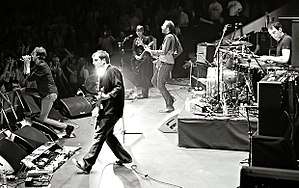
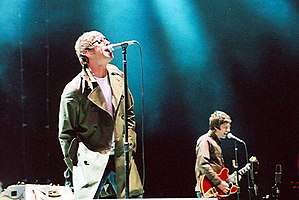
.jpg)
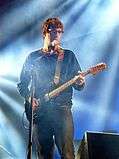
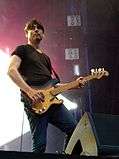
.jpg)